Being one of the oldest cities in the southern Brazilian state of Paranã, Morretes is a most charming colonial town, tucked away in one of the largest and best preserved areas of Atlantic rainforest of south Brazil.
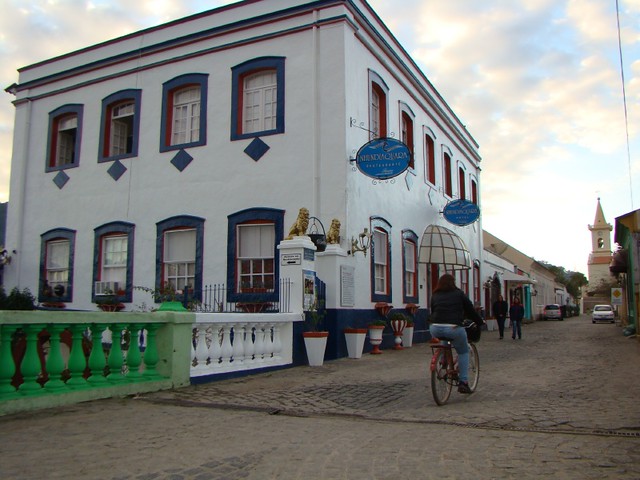
Oldest building in Morretes. Today it is a restaurant where you can enjoy the local cuisine...
Just like the rest of Brazil, the region where Morretes was founded in 1721, was initially inhabited by indigenous tribes, like the Guarani and the Carijó, who eventually had to give way to the Portuguese colonizers.
In the 1640′s, gold deposits were found in the area and this attracted a growing population of adventurers and miners, most of them coming from São Paulo, but later also followed by immigrants from all over Europe and even Japan.
Today, Morretes is a quiet, laid back town, that enchants its visitors with its beautifully preserved 18th century architecture and the stunning beauty of the Atlantic rainforest that surrounds it in every direction.
Why Visit Morretes?
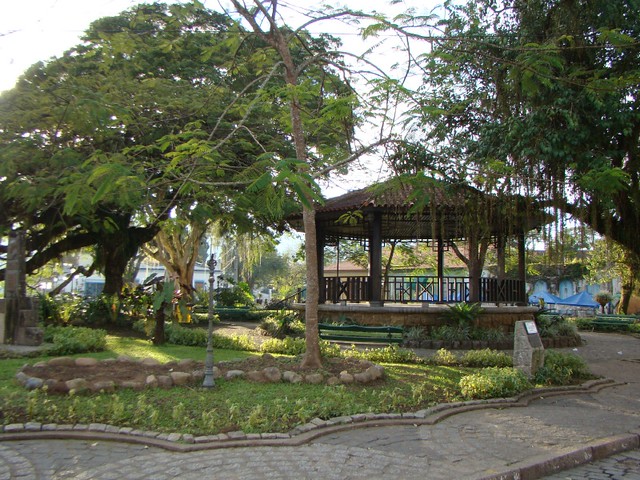
One of the green squares in the historical center of Morretes
The city itself, but especially the forest, with its many trails, waterfalls and rivers, presents numerous options for anyone looking for total tranquility or an active vacation, practicing various outdoor activities like hiking, kayaking, rafting, mountain-biking or mountaineering…
A very popular “radical sport” is what is locally known as “Bóia cross“. Floating down the river for 6 km in an inflated truck tube. Fun guaranteed!
During a stroll through the historical center, with its colonial houses, historical churches and green squares, you can get a good feel for the 18th and 19th century way of life of the people of Morretes.
The many big mansions suggest that the city must have known a period of great wealth, but when the gold deposits ran out, the population had to fall back on agriculture, cattle farming, trading and handicraft activities.

View of the historical center and the Nhundiaquara river from the Ponte Velha (old bridge)
The tourist industry today provides an extra way for people to make a decent living, but statistics show that about 30 per cent of the city’s population is still poor.
One more attraction of Morretes is the Nhundiaquara River, flowing through the city center. This river, that connects the coastal area to the highlands, once was the only way people had to penetrate inland.

View of some houses near the Nhundiaquara river
The river is navigable for about 12km and offers possibilities for water-sports (like bóia cross). The old bridge (ponte velha – inaugurated in 1912) crossing the river in the city center is also considered a work of art.
At one point, the river spreads out and creates an area with a few natural beaches where people can go to swim or relax.
More pictures of Morretes on Flickr
How to get there?
1. By car, motorcycle, Bus
Whether you choose to take your own car or Motorcycle (like me), travel by bus or taking the tourist train, one way or another, you simply have to get through the Serra da Graciosa, which in itself already is a gorgeous trip.
By car (or motorcycle), the “Estrada da Graciosa” (PR410) is the best option. It covers the last 40km from Curitiba to Morretes and makes the 1000m drop from the highlands to practically sea level in just 10km. The steepest section – with obviously the best views – has various places where you can stop and enjoy the scenery, and even do a BBQ.
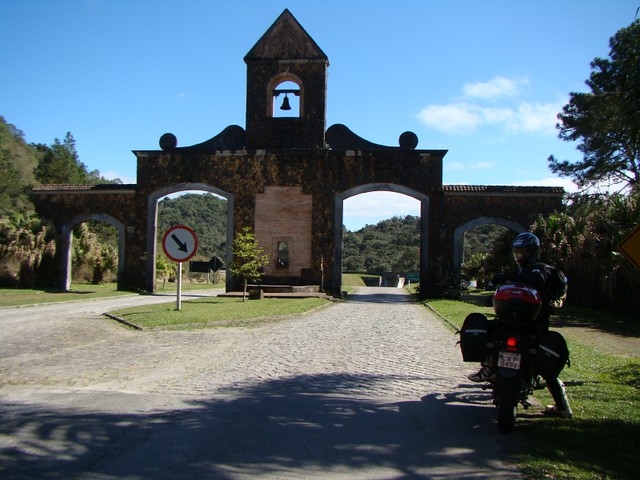
The gate at the entrance of the "Estrada da Graciosa"
During the steep descent, the views and smells of the rainforest are sometimes breathtaking, and needless to say that the difference in altitude almost immediately also affects the temperature and humidity. A warning though: beware of the cobblestones, these can get very slippery when wet.
2. By train:
Another great option is the tourist train from Curitiba to Paranaguá.
This railroad connection, some call it one of the most important tourist attractions of the state of Parana, is a remarkable piece of engineering. Its construction started in 1880 and in five years, the builders were able to complete the 110 km of railroad track, including 14 tunnels and 30 bridges.
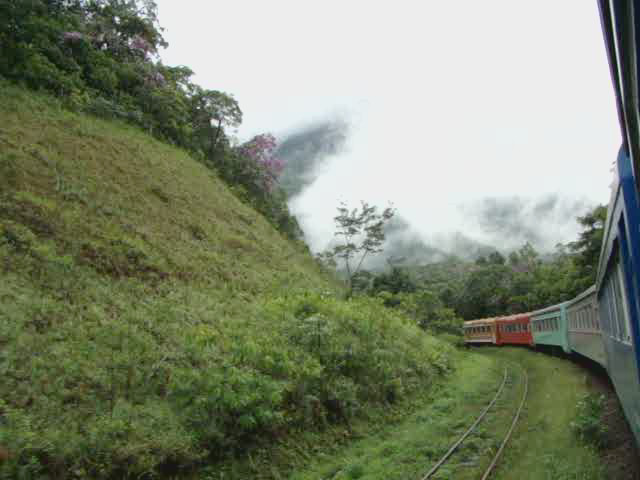
View from the train from Morretes to Curitiba
The man responsible for this great work, was a black Brazilian engineer called Antonio Pereira Rebouças Filho, who wouldn’t have had an easy life, considering the fact that slavery in Brazil was only abolished in 1888, three years after the completion of the railroad.
Tragic detail: the death toll amongst the workers, hired for the job was enormous. 50% of them died during the five year construction period.
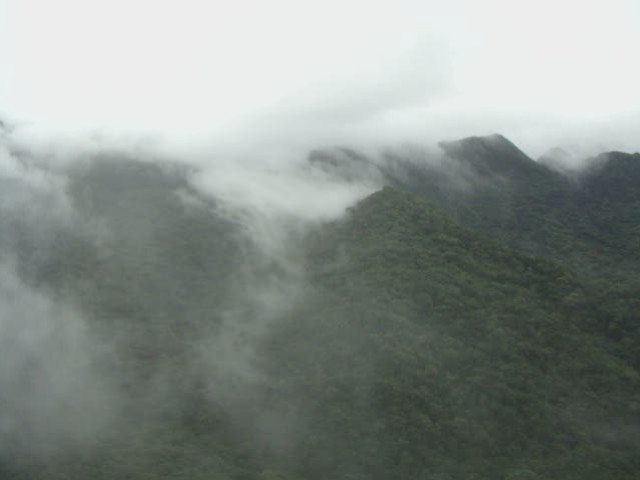
the serra da graciosa as seen from the train Morretes - Curitiba.
That said, the train ride itself is Fantastic! The windows of the train are super wide and you are allowed to open them for maximum enjoyment of the great scenery, the sounds and smells of the forest.(Although during the descent, the brakes of the train make a lot of noise ![]() ) Almost the whole time you’re so close to the forest that you could almost touch it. Here are some more pictures on Flickr.
) Almost the whole time you’re so close to the forest that you could almost touch it. Here are some more pictures on Flickr.
So, when you find yourself traveling through the south of Brazil, Morretes is definitely a place to put on your “places to see” list.
Hope you enjoyed this.
Any comments welcome
Raf
You need to be a member of Tripatini to add comments!
Comments